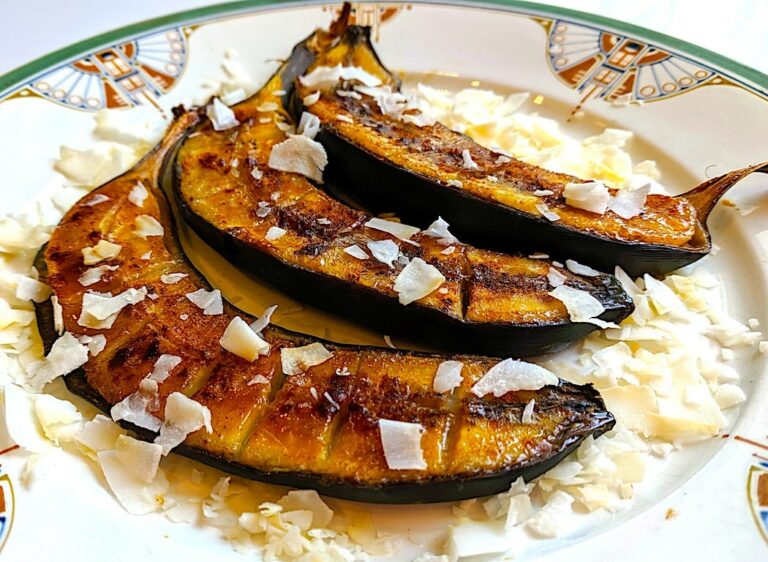Introduction: Equatorial Guinean Cuisine
Equatorial Guinean cuisine is a melting pot of African, Spanish, and Portuguese influences. The country, located on the west coast of Central Africa, is made up of a mainland and five inhabited islands. Equatorial Guinea is known for its abundant seafood, tropical fruits, and root vegetables that feature prominently in many of its dishes. The country’s cuisine is as diverse as its people, and there are distinct regional variations that can be found throughout the country.
Geography and Climate: Influences on Equatorial Guinean Cuisine
Equatorial Guinea’s geography and climate play a significant role in shaping its cuisine. The country is located in the tropics, which means that it has a hot and humid climate. The country’s tropical rainforest and savannah landscapes provide an abundance of fresh produce such as plantains, cassava, and yams. The coastal regions are rich in seafood, while the interior is home to a variety of bushmeat. The different regions of the country have their own unique ingredients and cooking methods, which have led to regional variations in the cuisine.
Traditional Dishes: Commonalities and Unique Characteristics
Traditional dishes in Equatorial Guinea are often simple yet flavorful. Many of the country’s dishes feature a combination of rice, meat, fish, and vegetables. A common staple is Fufu, which is made by pounding cassava or plantains into a dough-like consistency. Another popular dish is Sopa, a soup made with chicken, fish, or meat and vegetables. Equatorial Guineans also love their stews, with variations made with fish, chicken, or beef. Despite these commonalities, each region has its unique dishes and flavors.
Coastal Regions: Seafood and Plantain-Based Dishes
The coastal regions of Equatorial Guinea are known for their seafood dishes. Fish, shrimp, and crab feature prominently in these dishes. The seafood is often grilled, fried, or stewed with a mix of local spices and herbs. One of the most popular seafood dishes is called Batong, which is a dish made with fish, tomatoes, onions, and spices. Plantains are also a staple ingredient in these regions, and they are often boiled, fried, or mashed to create dishes like Ndolo and Dodo.
Continental Regions: Bushmeat and Root Vegetable-Based Dishes
The continental regions of Equatorial Guinea are known for their bushmeat dishes. These dishes are made with various types of wild game such as crocodile, antelope, and monkey. Root vegetables like cassava, yams, and sweet potatoes are also a staple in these regions. One of the most popular dishes in these regions is called Nkate Nkue, which is a soup made with peanut butter, chicken, or beef, and vegetables.
Island Regions: Fish and Coconut-Based Dishes
The island regions of Equatorial Guinea are known for their fish and coconut-based dishes. Fish is the main ingredient in many of the dishes, and it is often prepared with coconut milk. The islands’ tropical climate also provides an abundance of fruits like bananas, mangoes, and papayas, which are often used in desserts. One of the most popular dishes in these regions is called Caldo de Bagre, which is a fish soup made with plantains, cassava, and coconut milk.
Fusion Cuisine: Cultural Influences on Equatorial Guinean Cuisine
Equatorial Guinean cuisine has been influenced by various cultural and historical forces, including African, Spanish, and Portuguese cuisines. Over time, these influences have merged to create a unique fusion cuisine. For example, Spanish influence can be seen in dishes like Sopa de Mariscos, which is a seafood soup made with tomato sauce and paprika. African influence can be seen in dishes like Fufu and Nkate Nkue, which use local ingredients and cooking methods.
Conclusion: Regional Variations in Equatorial Guinean Cuisine
Equatorial Guinea’s regional variations in cuisine reflect the country’s diverse cultural and geographical influences. From seafood dishes on the coast to bushmeat stews in the interior, each region has its unique flavors and ingredients. However, commonalities such as the use of rice, vegetables, and local spices can be found throughout the country. Equatorial Guinean cuisine is a fascinating blend of different cultures, flavors, and ingredients that is sure to tantalize anyone’s taste buds.

